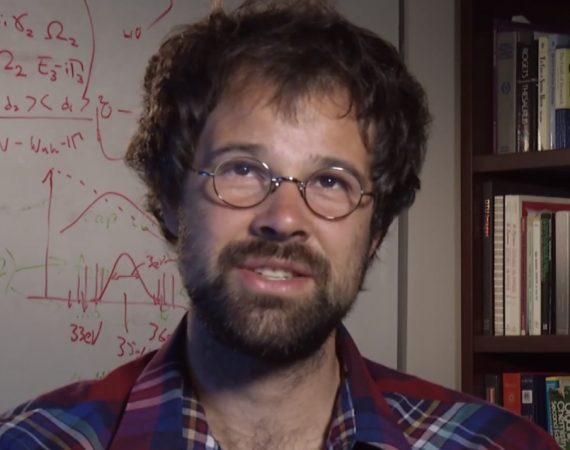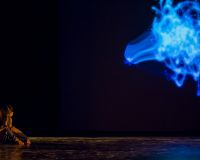David Glowacki
Royal Society Fellow and chief scientific consultant at Interactive Scientific (iSci). Hates disciplinary boundaries. Likes projects where artistic enquiry guides scientific enquiry into new territories, and vice versa.

Worked on

Nano Simbox
The Nano Simbox is designed by Interactive Scientific Ltd., a Bristol-based tech startup company founded in 2013 by David Glowacki and Phill Tew, and presently managed by Dr. Becky Sage.
danceroom Spectroscopy
An interactive visualisation fusing virtual reality, high-performance computing, and molecular physics. dS lets you see your energy avatar, and use it to interact with the atomic world.David Glowacki (that’s me) is a scientist, artist, and cultural theorist (www.glow-wacky.com). I have appointments as a Royal Society Research Fellow at the University of Bristol, and as a visiting scholar at Stanford. In Bristol, I head up an eclectic academic research group between the Centre for Computational Chemistry and the Department of Computer Science. I am also the founder of a Bristol-based tech startup company called interactive Scientific Ltd. (iSci), who specialize in developing interactive apps and virtual reality for molecular simulation and scientific education.
I publish in several domains including: digital aesthetics, human-computer interaction, high-peformance computing, evolutionary algorithms, religion & power, classical & quantum dynamics, biochemistry, atmospheric physics, and scientific instrument development. One of my projects is the multi-award winning ‘danceroom Spectroscopy’ art installation and the 'Hidden Fields' dance performance. Since 2011, these have been experienced by well over 100,000 people across Europe, the USA, and Asia, including venues like London’s Barbican, Germany’s ZKM, the London 2012 Olypmics, and the Stanford University Art Institute.
Scientific visualization involves aesthetic and design decisions. This is particularly true for visualizations of microscopic domains, which cannot be seen with the naked eye. It's an important issue, because our scientific intuition is guided by the aesthetic representations and mental images that we form of an otherwise invisible world. In fact I would claim that the imagery is the reality in these domains. And the imagery in turn impacts how we communicate these 'realities' to others, in both educational & research contexts. Over the last few years, my work in digital art has driven new scientific research outcomes. For example, the algorithms we designed to make artworks have been fast enough to accelerate molecular research. This is distinct from how most collaborations at the science-art boundary typically work, where: (1) scientist comes and tells artists about his/her work; (2) artist uses the scientist’s approach as “inspiration”; (3) artist goes off and produces something. In this process, scientific enquiry is the origin of the ideas, and artistic enquiry is a sort of derivative outcome, propagating power asymmetry between the two. In contrast, I am interested in cases where each meaningfully guides the other – i.e., artistic enquiry guiding scientific enquiry into new territories, and vice versa.
As I’ve gotten more involved with the institutionalized & ‘establishment’ art world, I’ve become interested in the relationship between art & power: namely, how is power enforced in artistic expression, and is it possible to use artistic means to subvert established cultural power? And how do institutional, political, and religious structures combine to shape ideology, morality, individual choice, and collective/individual identity? The kings of old might be gone, but we’re subjects nonetheless. Occasionally I publish papers on these topics, and sometimes I've even been known to undertake field research to test my hypotheses...